Day 1 Lima
Day 2 Lima - Cuzco (657 km)
Day 3 Cusco - Rainbow Mountain - Cusco
Day 4 Cusco: Sacred Valley of the Incas - Sanctuary of Ccochahuasi - Pisac Market -
Perilnoyoc Waterfall - Hanging Hotel - Ollantaytambo (77 km)
Day 5 Cuzco - Km82 - Huayllabamba
Day 6 Huayllabamba - Pacaymayo
Day 7 Pacaymayo - Winayhuayna
Day 8 Winay Huayna - Waynapicchu - Machu Picchu - Cuzco (75 km)
Day 9 Lima (582 km)
Day 10 Lima - Tumbes - Guayaquil (1134 km)
Day 11 Guayaquil - Santa Cruz Island (1241 km)
Day 12 Las Grietas - Tortuga Bay
Day 13 Santa Cruz Island - Isabela Island (17 km)
Day 14 Los Tunnels - Wall of Tears
Day 15 Sierra Negra Volcano
Day 16 Isabela Island free day or optional to take a Fishing Tour
Day 17 Isabela Island - Baltra - Guayaquil (1258 km)
Day 1:
Lima
Today guests will be transferred to the hotel after arrival in Lima International airport. Then we will enjoy the free time to rest and prepare for the trip.
-
Lima, PERU
Lima, the capital city of Peru, was founded by conquistador Francisco Pizarro in 1535. This city's historic places include the National University of San Marcos, which was established in 1551 and is the oldest university in the Americas.
Day 2:
Lima - Cuzco (657 km)
Breakfast: Included|Lunch: Excluded|Dinner: Included
After breakfast, we will be transferred to Lima airport for flight to Cuzco. Upon arrival we will transfer to the hotel and enjoy leisure time. We could walk to the San Blass Street within 2 minutes distance from hotel. It has an attractive square and the oldest parish church in Cuzco.
Afterwards we will go for a brief walking though some of the finest Inca constructions that remain in the city. At east of the Plaza de Armas, Calle Loreto is one of the best-known Inca thoroughfares. At northeast of the Plaza de Armas off Calle Palacio is Hatunrumiyoc. Across the Archbishop's Palace on the right side is the famous 12 Angled Stone. From Hatunrumiyoc, make your first right down another pedestrian alleyway, Inca Roca; Then we will also visit Siete Culebras, the alleyway connecting Plaza Nazarenas to Choquechaca. After that we will visit other streets such as Herrajes, Pasaje Arequipa, and Santa Catalina Angosta.
In the afternoon, we go on a sightseeing of Cuzco, visiting the Main Square, the Cathedral and the Temple of the Sun or Korikancha. Then we will drive out of the city to visit the Inca sites of Kenko, Tambomachay, Puca Pucara and the Fortress of Sacsayhuaman.
At around 8:00pm we would enjoy dinner with a folklore show while appreciating the beautiful sounds by Andean instruments.
-
Cusco, PERU
This city once served as the capital of the Inca Empire. Many of its most popular sights are the ruins of this once-great people, such as the famous "lost city" of Machu Picchu. Cuzo itself also has many sights.
Cuzco Cathedral
This cathedral, also called the Basilica of the Assumption of the Virgin, was completed in 1654, and is located in the Plaza de Armas. It contains many historically significant objects and relics.
Qurikancha
The site where these impressive ruins stand was once the most important temple in the entirety of the Incan Empire. Reports from Spanish explorers of the time describe the temple's ipulence in great detail.
-
Machu Picchu, PERU
The famous citadel of the Inca sits atop a scraggy mountain peak overlooking the valley that was sacred to those people. These ruins feature many temples and the famous terraced-gardens the Inca developed for agriculture in the Andes.
Temple of the Sun
The Temple of the Sun is a building in Machu Picchu that one stood as the tallest building in the city, to mark its importance for the Inca. Sacred religious rituals and astronomical studies were held within the building.
Day 3:
Cusco - Rainbow Mountain - Cusco
Breakfast: Included|Lunch: Included|Dinner: Excluded
A fantastic day tour ( with trekking ) to the so - called 7 Color Mountain, leaving from Cusco. Located in southern Peru, in the Cusco region, this route will take you through stunning landscapes with glaciers, snowcapped mountains and crystal clear rivers and lakes. Pass by local villages of Quechua descendants and explore the breathtaking surrounding nature. You will be picked up from your accommodation at around 3.00am and start making your way to Arco ( on the route to Puno ) eventually getting to the Checacupe district ( 2 hour journey ). Then we will continue to Pitumarca and a number of small villages till we reach the Hanchipata - Quesuno community ( another 1.5 hours ). From here we start our hike. The trek lasts for about 3 hours until we get to the stunning landscape of Vinicunca ( Rainbow Mountains ). Here we will have about one hour to relax and take amazing pictures of this natural wonder. We then hike back to the starting point of the trek, and from there return to Cusco ( arriving at approximately 19.00 ).
-
Cusco, PERU
This city once served as the capital of the Inca Empire. Many of its most popular sights are the ruins of this once-great people, such as the famous "lost city" of Machu Picchu. Cuzo itself also has many sights.
Day 4:
Cusco: Sacred Valley of the Incas - Sanctuary of Ccochahuasi - Pisac Market -
Perilnoyoc Waterfall - Hanging Hotel - Ollantaytambo (77 km)
Breakfast: Included|Lunch: Included|Dinner: Excluded
Early morning excursion to the Urubamba Valley, the Sacred Valley of the Incas. on our way 30’from Cusco we can stop in Ccochahuasi Animal Sanctuary, where we'll get to know the animals and visit some of the small onsite exhibits.
Visit to the picturesque Indian Pisac Market held on Tuesdays, Thursdays and Sundays. Enjoy the unique atmosphere during a typical lunch.
In the afternoon, passing through the Towns of Calca and Urubamba, we visit the Inca Fortress and Citadel of Ollantaytambo. You can walk through the quaint streets of the nearby Town, and get a good idea of what this strategic Military, Religious, and Agricultural Centre was like during the era of the Inca Empire.
Hike to the Waterfall and Archaeological Site of Perolniyoc will take you deep into the sacred valley, also visit the archaeological center that sits on top of the Racaypata or Perolniyoc waterfall. we will have lunch in a family house of Rural community in Socma they will teach You how to hew a variety of Marble stone.
Then we will stop for 5’ to see a Hanging Hotel.
At the end we will visit Ollantaytambo Ruins lie in the town of Ollantaytambo
-
Sacred Valley, PERU
The heart of the Inca Empire, the Sacred Valley of the Incas is the region of Peru surrounding the city of Cusco. The valley is full of the ruins of this once-powerful empire, such as Ollantaytambo, Pisac and Tipon.
Ccochahuasi Animal Sanctuary
The Ccochahuasi Animal Sanctuary is a family-run rescue center in Peru's Sacred Valley. It shelters and rehabilitates abused or trafficked Andean animals, like condors and pumas, offering visitors an educational experience on wildlife conservation.
Pisac Market
Pisac Market is a busy marketplace where fresh produce, meats, and handmade crafts are sold by locals.
Ollantaytambo Ruins
Ollantaytambo was a very important agricultural, military, and religious center during the time of the Inca Empire. It is considered a masterpiece of Inca architecture. The main section includes 17 imposing terraces leading up to a fortress. At the top there is an impressive 10-niche wall and Sun Gate, as well as a monolithic Sun Temple consisting of six enormous pink granite boulders.
Perolniyoc
Perolniyoc features a stunning stepped waterfall and a well-preserved Inca outpost. Hidden in the mountains of the Sacred Valley, a rewarding hike leads to this combination of natural beauty and ancient history.
Socma
Socma is a tranquil Andean village in Peru's Sacred Valley, known as a "gateway." It's a popular trailhead for hikes to stunning sites like the Perolniyoc waterfall and Inca ruins, set amidst traditional pastoral landscapes.
Skylodge Adventure Suites
The Skylodge Adventure Suites in Peru is the ultimate adventure lodging. Three transparent pods hang from a Sacred Valley cliff. Accessed via climbing or zipline, it offers 360-degree views of the stars and valley.
Day 5:
Cuzco - Km82 - Huayllabamba
Breakfast: Included|Lunch: Included|Dinner: Included
In the morning, our guide will pick you up from your hotel to transfer you by bus to the km 82 where you will arrive at approx. 10:30 am. Here you will meet the team that will join you during the trek, such as the porters, camp assistants and cooks. You will begin the walk, the first day is quite easy and during the first kilometres you will have a beautiful view of the snow peaked Veronica Mountain, walking alongside the Vilcanota River until you arrive at the Archaeological Complex of Patallacta, where you will have lunch and gain energy to reach Huayllabamba, where the first camp is set up.
-
Cusco, PERU
This city once served as the capital of the Inca Empire. Many of its most popular sights are the ruins of this once-great people, such as the famous "lost city" of Machu Picchu. Cuzo itself also has many sights.
Day 6:
Huayllabamba - Pacaymayo
Breakfast: Included|Lunch: Included|Dinner: Included
After breakfast, we will start the hardest part of the tour with a steep ascent, followed by 3 hours walking until reaching the Warmiwanusca up to 4.2km approximately. We will not only enjoy incredible panoramic views from here but also have the satisfaction to have reached the top. After lunch in Vizcachayoc, we will descend towards Pacaymayo for dinner and camp.
-
Inca Trail, PERU
The Inca Trail is the famous pathway that cuts through diverse landscapes of the Andean wilderness until it reaches the famed ruins of Machu Picchu. The trail passes the sites of several Inca ruins.
Warminwanusqa
This mountain pass along the Inca Trail in Peru is named "Dead Woman's Pass" in the Quechua language. This foreboding name comes from the steep ascent one must undertake to pass through the area.
Pacaymayo Valley Campsite
This is one of the more active campsites along the Inca Trail through the Andean wilderness. It is a relaxing place to stop for the evening along your trek.
Day 7:
Pacaymayo - Winayhuayna
Breakfast: Included|Lunch: Included|Dinner: Included
After breakfast the ascent will begin until to around 3.9 km where we will visit to the archaeological complex Runkurakay and the Inca Citadel of Sayacmarca. Then we will have a lunch in Chaqquicocha. After that we will continue walking towards Phuya Patamarca. After a brief rest, we will go on walking until arriving at Winay Huayna for a visit to this spectacularly located Archaeological Complex. Then we will have a dinner and overnight in the camp.
Note: above camp sites are the regular and subject to the disposition levied by the Machu Picchu Management Unit without prior notice, meantime tour itinerary will not be affected.
-
Inca Trail, PERU
The Inca Trail is the famous pathway that cuts through diverse landscapes of the Andean wilderness until it reaches the famed ruins of Machu Picchu. The trail passes the sites of several Inca ruins.
Winay Wayna
The name of these ruins translate to English as "forever young," a beautiful moniker for a beautiful set of terraced fortifications built into a steep cliff-face, showcasing the impressive architectural skills of the Inca.
Sayaqmarka
This archaeological site along the Inca Trail in the heart of the Andes mountains sits on a cliff high above the valley below. It is one of the last major landmarks on the trail before Machu Picchu.
Day 8:
Winay Huayna - Waynapicchu - Machu Picchu - Cuzco (75 km)
Breakfast: Included|Lunch: Excluded|Dinner: Excluded
After breakfast, we start walking for 1 hour by the forest until the Inti Punku, known as the front door to Machu Picchu. Then we will climb 6km to Huayna Picchu. After that we go down to Machu Picchu ruins and visit the Main Square, the Circular Tower, the Sacred Solar Clock, the Royal Quarters and etc. Afterwards we could enjoy our free time to stroll around the Citadel and then meet the rest of the group to be transferred by bus to Aguas Calientes for lunch. In the afternoon we will return to Cusco by train. Upon arrival we will be transferred to the hotel.
-
Machu Picchu, PERU
The famous citadel of the Inca sits atop a scraggy mountain peak overlooking the valley that was sacred to those people. These ruins feature many temples and the famous terraced-gardens the Inca developed for agriculture in the Andes.
Inti Punku
Translated to English, the name means "Sun Door," and this gateway stands as the entrance to the ruins of Machu Picchu. Many visitors wake up before dawn so they can view the sunrise from this point.
Huayna Picchu
Accessible only via a narrow mountain path from Machu Picchu, the peak of Huayna Picchu rises above its counterpart below. Home to many of the temples of the ancient city, it provides one of the best views in Peru.
Temple of the Moon
The Temple of the Moon is an Incan ceremonial temple on Huayna Picchu near Machu Picchu, in Peru. The site is made up of stone masonry and an open-face, shallow cave. The Temple dates back 1500 years and was rediscovered in 1936.
Temple of the Sun
The Temple of the Sun is a building in Machu Picchu that one stood as the tallest building in the city, to mark its importance for the Inca. Sacred religious rituals and astronomical studies were held within the building.
-
Aguas Calientes, PERU
This town sits 20 minutes down the mountain from Machu Picchu. Its name, "hot waters" in English, derives from the presence of numerous thermal springs in the area that make thisvillage a great place to relax after a hike.
Day 9:
Lima (582 km)
Breakfast: Included|Lunch: Excluded|Dinner: Excluded
After breakfast, we will transfer to Cusco Airport for our fly to Lima, where to take a city sightseeing tour. The tour includes Lima's Historical Centre, passing by Plaza San Martin, the Main Plaza, the Government Palace, the City Hall, the Cathedral and its Religious Art Museum, the Church of Santo Domingo, with the tombs of Santa Rosa and San Martin de Porras, and Lima's Colonial Balconies. After that, we will visit the Convent and Church of San Francisco. Then we will visit the Basilica of 21 altars, Convent of Cloisters, Capitulary and Clementine Rooms, Chorus and Library of the Monks, the Sacristy with paintings of Surbaran and Ribera. We will also visit El Olivar Park with olive trees, the Central Park of Miraflores and Larcomar, a privileged site to enjoy an amazing view of the Pacific Ocean.
-
Lima, PERU
Lima, the capital city of Peru, was founded by conquistador Francisco Pizarro in 1535. This city's historic places include the National University of San Marcos, which was established in 1551 and is the oldest university in the Americas.
Plaza San Martin (Passing By)
One of the most representative public spaces in Peru which is located in the Lima Historic Center and was declared a World Heritage Site by UNESCO in 1988. There is a monument in the center of the square in memory of Jose de Saint Martin, the liberator of Peru.
Government Palace (Passing By)
The Government Palace, located on the north side of the Plaza Mayor in Peru's capital city Lima. The palace was built in 1535 and is a stately government building with a set of ornamental guards. It features a large wrought-iron fence that surrounds the building and lines one side of the Plaza Mayor behind the Rimac River.
Monastery of San Francisco
Saint Francis Monastery located in Lima, Peru. The church and convent are part of the Historic Centre of Lima, which was added to the UNESCO World Heritage List in 1991. Aside from a church and monastery it also contains a library and catacombs.
El Olivar Park
El Olivar is a historic olive grove in the heart of Lima, dating back to the 15th century. With over 1,500 olive trees, it's a serene urban oasis perfect for walks and birdwatching.
Larcomar
Larcomar is a famous cliffside shopping center in Miraflores, built on the cliffs overlooking the Pacific Ocean. It offers stunning sea views, combining shopping, dining, and entertainment.
Miraflores Central Park
Miraflores Central Park is the heart of the district, known for its lush greenery and resident cat colony. It features sculptures, a church, and the iconic "Love Park," brimming with romantic ambiance.
Day 10:
Lima - Tumbes - Guayaquil (1134 km)
Breakfast: Included|Lunch: Excluded|Dinner: Excluded
Today we will transfer to Lima airport for flight to Tumbes border between Peru and Ecuador. Upon arrival we will transfer to Guayaquil in private car and guide. Then we will be transferred to the hotel.
-
Guayaquil, ECUADOR
Guayaquil is a port city of Ecuador as well as a popular tourist destination for people who want to experience the South American vibe. Tourists can explore the colorful architectures, urban parks, the delicious food, and great music here.
Day 11:
Guayaquil - Santa Cruz Island (1241 km)
Breakfast: Included|Lunch: Excluded|Dinner: Included
Upon arrival in Baltra Airport we will transfer to Santa Cruz and then taken to the hotel by your tour guide. We will visit the Rancho Primicias in the island's highlands where we will be able to see giant turtles in their habitat.
Then we will go on to Lava Tunnels. After that we will come to the Los Gemelos. We could find the famous vermillion flycatcher, Charles Darwin finches, and short eared owls.
-
Guayaquil, ECUADOR
Guayaquil is a port city of Ecuador as well as a popular tourist destination for people who want to experience the South American vibe. Tourists can explore the colorful architectures, urban parks, the delicious food, and great music here.
-
Santa Cruz Island, ECUADOR
The second largest of the Galapagos Island chain in the pacific Ocean, Santa Cruz is home to the settlement of Puerto Ayora, the most populous town on the islands. The island itself is a dormant volcano.
Rancho Primicias
Rancho Primicias on Santa Cruz Island is a renowned spot to encounter giant tortoises. Visitors can observe and feed these gentle Galápagos giants in their natural habitat.
Lava Tunnels
Lava Tunnels,the largest lava tubes in the Galapagos are on Santa Cruz Island. It is a gigantic lava tunnel that is over 2000 meters long on the Island that many tourist come to visit and walk through.
Los Gemelos
Los Gemelos are located in the highlands of Santa Cruz Island. They are not actual craters caused by impact, but are sink holes that were created when the volcanic roof of empty magma chambers collapsed from tectonic shifts and erosion over time.
Day 12:
Las Grietas - Tortuga Bay
Breakfast: Included|Lunch: Excluded|Dinner: Excluded
After breakfast we will hike through a forest of enormous cacti and over rugged lava rock formations to the swimming hole in the Galapagos Islands. Las Grietas is a popular swimming destination for locals and visitors alike.
After Lunch we will walk to Tortuga Bay, which is located on the Santa Cruz Island. Tortuga Bay has a gigantic, perfectly preserved beach, that is forbidden to swimmers. There is a separate cove where we can swim and view white tip reef sharks swimming in groups or tiger sharks.
-
Santa Cruz Island, ECUADOR
The second largest of the Galapagos Island chain in the pacific Ocean, Santa Cruz is home to the settlement of Puerto Ayora, the most populous town on the islands. The island itself is a dormant volcano.
Las Grietas
Las Grietas is a dramatic volcanic fissure on Santa Cruz Island filled with crystal-clear water. It's a superb spot for swimming and snorkeling to explore the unique underwater scenery.
Tortuga Bay
Tortuga Bay is located on the Santa Cruz Island, which has a gigantic, perfectly preserved beach that is forbidden to swimmers and is preserved for the wildlife where many marine iguanas, galapagos crabs and birds are seen dotted along the volcanic rocks. There is a separate cove where tourists can swim where it is common to view white tip reef sharks swimming in groups and on occasion tiger sharks.
Day 13:
Santa Cruz Island - Isabela Island (17 km)
Breakfast: Included|Lunch: Included|Dinner: Included
In the morning we will transfer to the Pier to catch the speed boat to Isabela Island. After arrival in Isabela we will transfer to the hotel after check in. We will walk around to Flamingos Lagoon that serves as one of the primary breeding grounds for Flamingos.
In the afternoon we take our ocean kayaks to the pier of Isabela, a set of small islets within Isabela Bay.The islets are home to the Galapagos penguin where we will also see sharks, marine turtles, sea lions, blue footed bobies and much more.
-
Isabela Island, ECUADOR
This island is the largest of those in the Galapagos chain off the coast of Ecuador. Because of the rich animal life, both on land and sea, Charles Darwin reasearched his theory of evolution here.
Flamingos Lagoon
The Flamingos Lagoon on Isabela Island is a pink spectacle in the Galapagos. Visitors can observe elegant wild flamingos against a unique volcanic landscape.
Day 14:
Los Tunnels - Wall of Tears
Breakfast: Included|Lunch: Excluded|Dinner: Excluded
After breakfast we will go to the pier for a 45 minute fibra ride to a place where Lava flow impacted with the oceans waves to form the stunning tubes and bridges of Los Tunnels. A series of lava flows have produced a number of arches and tunnels both under and above water, where we could find a number of animal species. After that we will continue to the Wall of Tears.
-
Isabela Island, ECUADOR
This island is the largest of those in the Galapagos chain off the coast of Ecuador. Because of the rich animal life, both on land and sea, Charles Darwin reasearched his theory of evolution here.
Los Tunneles
Los Tunneles, off Isabela Island, features unique lava arches and underwater tunnels. This famous snorkeling site is known for sea turtles, sharks, and tropical fish.
Wall of Tears
The Wall of Tears is a stark stone wall on Isabela Island, built by prisoners under harsh conditions. It stands as a historical testament to colonial punishment and is now a hiking destination.
Day 15:
Sierra Negra Volcano
Breakfast: Included|Lunch: Excluded|Dinner: Excluded
Early morning around 7:00am we will go to Sierra Negra Volcano. On the Sierra Negra Volcano we will hike to the rim of the six miles wide crater and then trek across an alien landscape of lava fields and fumaroles. We will have the opportunity to explore thermal vents and other fascinating geologic features before stopping for a snack near Volcan Chico. We could enjoy the vistas among the most breathtaking in Isabela from this spot and on clear afternoons afford views of the northern volcanoes on Isabela and Fernandina. Then we will have a savory hot lunch at Campo Duro. Afterwards we could enjoy our own time in the rest time.
-
Isabela Island, ECUADOR
This island is the largest of those in the Galapagos chain off the coast of Ecuador. Because of the rich animal life, both on land and sea, Charles Darwin reasearched his theory of evolution here.
Sierra Negra Volcano
Sierra Negra is a large shield volcano at the southeastern end of Isabela Island in the Galapagos that rises to an altitude of 1124m. It is one of the most active of the Galapagos volcanoes with the most recent historic eruption in June 2018.
Volcan Chico
Volcan Chico on Isabela Island offers a volcanic wonder with moon-like landscapes. This stunning hike features fumaroles and breathtaking views of the surrounding area.
Campo Duro
Campo Duro is an ecological farm in the highlands of Isabela Island. Visitors can observe and feed giant tortoises, experiencing rural life and local conservation efforts.
Day 16:
Isabela Island free day or optional to take a Fishing Tour
Breakfast: Included|Lunch: Excluded|Dinner: Excluded
Today we could enjoy a free day or fishing tour. In the early morning we will be on the way to the eastern side of the Galapagos which is known as one of the best fishing areas in the archipelago, you can expect to catch Striped, Blue and Black marlin as well as much bill - fish. Then we will spend the night in the hotel of this town.
-
Isabela Island, ECUADOR
This island is the largest of those in the Galapagos chain off the coast of Ecuador. Because of the rich animal life, both on land and sea, Charles Darwin reasearched his theory of evolution here.
Day 17:
Isabela Island - Baltra - Guayaquil (1258 km)
Breakfast: Included|Lunch: Excluded|Dinner: Excluded
After Breakfast in the morning we will transfer to Isabela Airport for the flights to Baltra and go on to Guayaquil and return back home.
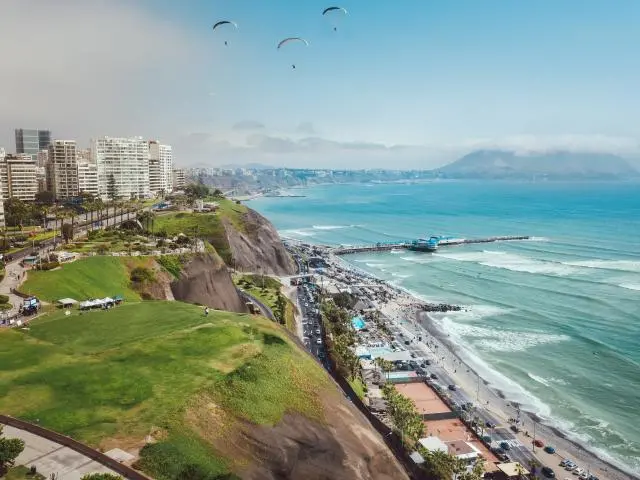

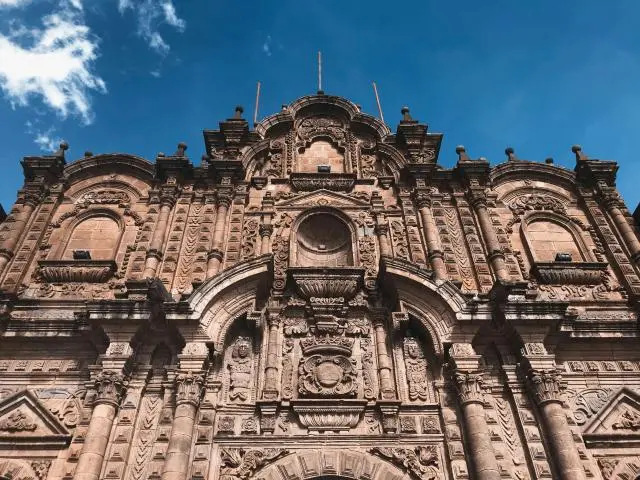
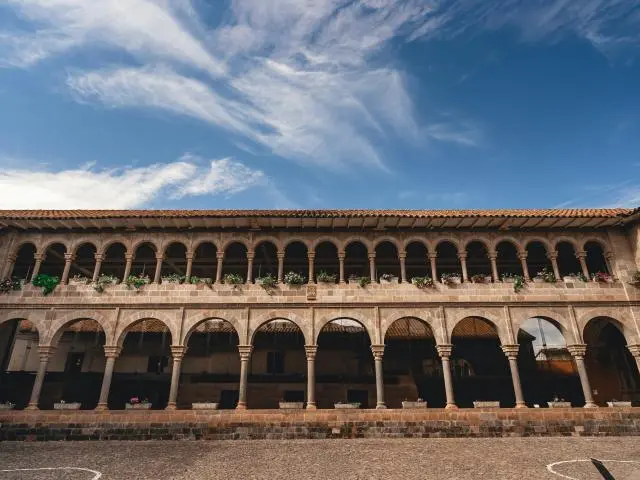



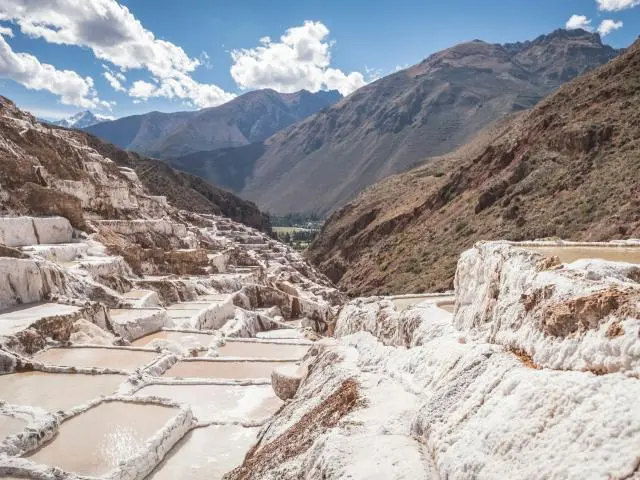





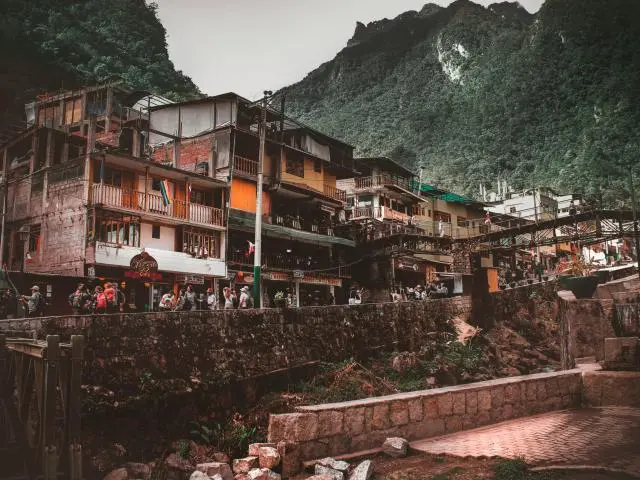

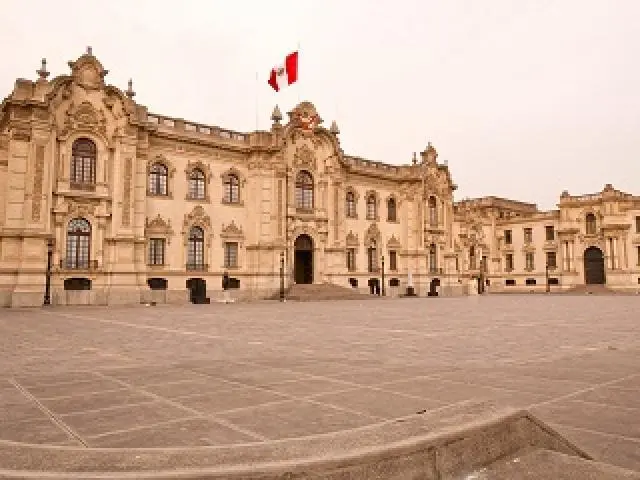
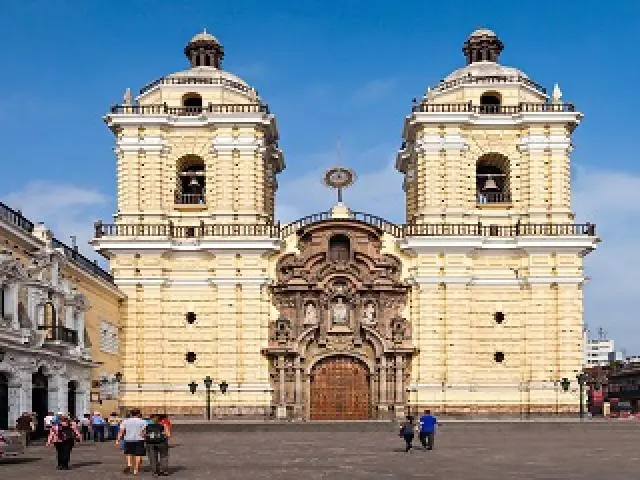





 15-Day Bolivia, Titicaca Lake, Uyuni Salt Lake, Cuzco and Mach...
15-Day Bolivia, Titicaca Lake, Uyuni Salt Lake, Cuzco and Mach...
 4-Day Pacaymayo, Huayllabamba, Wayna Picchu and Machu Picchu T...
4-Day Pacaymayo, Huayllabamba, Wayna Picchu and Machu Picchu T...
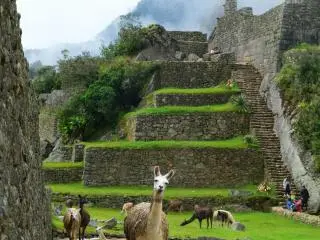 17-Day Cusco, Huayllabamba, Machupicchu, Ecuador and Isabela I...
17-Day Cusco, Huayllabamba, Machupicchu, Ecuador and Isabela I...
 11-Day Lima, Cusco, Machu Picchu, Arequipa and Lake Titicaca -...
11-Day Lima, Cusco, Machu Picchu, Arequipa and Lake Titicaca -...
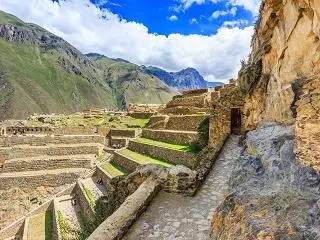 5-Day Lima, Sacred Valley, Machu Picchu, Cusco Tour from Lima,...
5-Day Lima, Sacred Valley, Machu Picchu, Cusco Tour from Lima,...